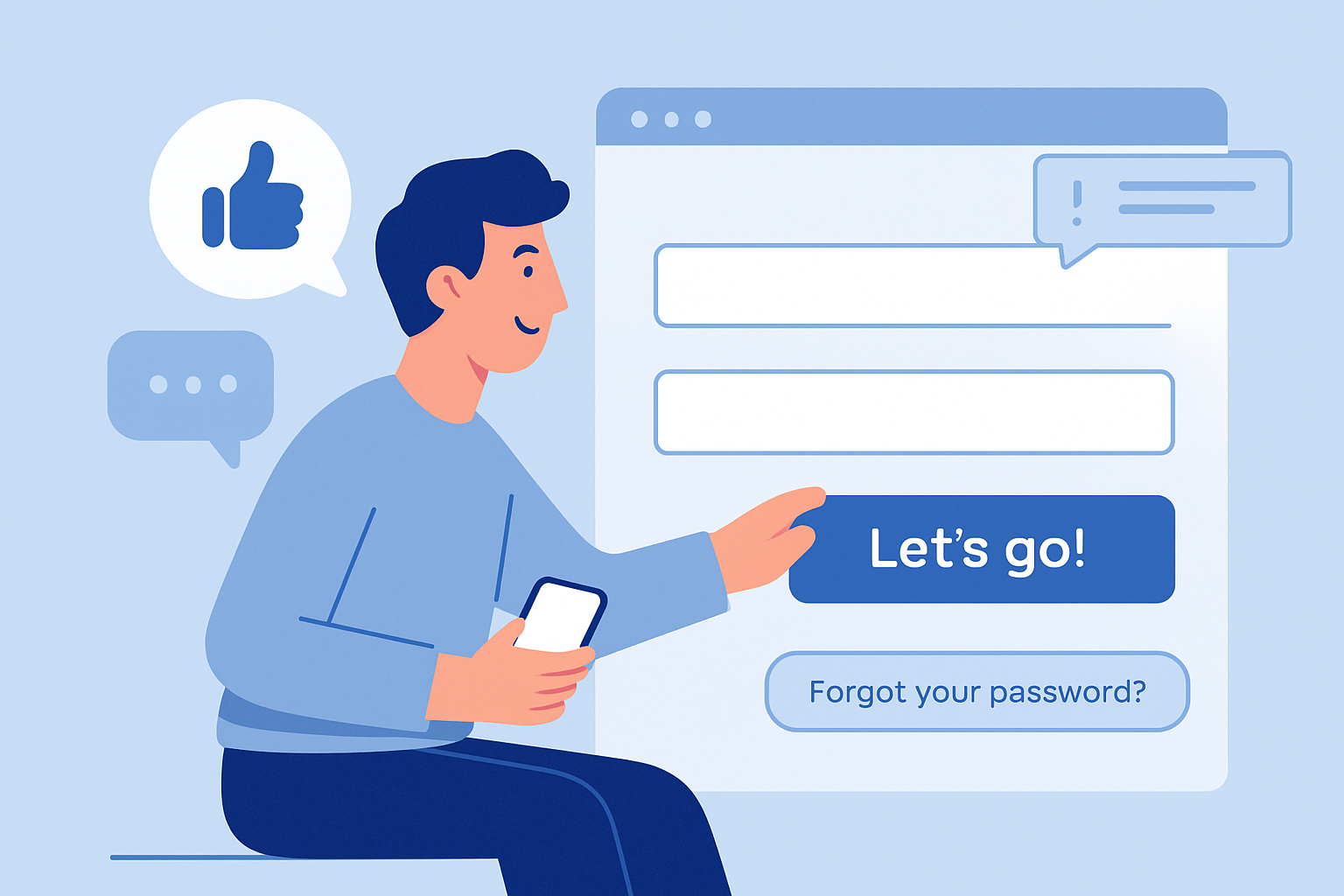
When you click a button or fill out a form, the little bits of text—the labels, the error messages, the “submit” button copy—are guiding you every step of the way. That’s microcopy, and done right, it can transform confusion into clarity, hesitation into action, and friction into delight.
What Is Microcopy and Why It Matters
Microcopy is the tiny text that accompanies interactions: button labels like “Get Started,” form hints like “Your email, please,” or error messages like “That password’s too weak.” It may be small, but it’s mighty. Every word you choose can reassure users, set expectations, and keep them moving forward without frustration.
Many sites treat microcopy as an afterthought—defaulting to “Submit” or “Click here.” But those two words don’t build trust or explain the benefit. In 2025, where users expect seamless digital experiences, microcopy is your silent salesperson.
Key Principles for Crafting Effective Microcopy
Be Direct but Friendly
Use natural language that sounds like a real person. “Let’s go!” feels more human than “Proceed.”Guide, Don’t Confuse
When users hit an error, tell them exactly how to fix it. “Please include an @ in your email” is far clearer than “Invalid email.”Highlight the Benefit
Turn “Subscribe” into “Join thousands of pros” or “Get weekly tips.” Let users know why they should care.Keep It Brief
Microcopy works best in a single line. If you need more space, link to additional info (e.g., “Learn why we ask for your birthday”).Align with Brand Voice
Your microcopy should feel part of the same brand personality as your headlines and body text—even if it’s just a button label.
Real-World Examples That Shine
Here are a few brands mastering microcopy:
Slack uses button text like “Create a new workspace” instead of the generic “Submit,” so you always know what you’re doing.
Mailchimp says “Grow my business” on its sign-up button—reminding you of the end goal.
Duolingo uses playful hints (“I forgot that word, oops”) to reduce frustration when you get an answer wrong.
These little touches make a big difference in engagement and user satisfaction.
How to Test and Iterate Your Microcopy
Start small: pick one button or form on your site and rewrite the label with a clearer, friendlier phrase. Then:
Run an A/B test to measure click-through or completion rates.
Gather user feedback through short in-app surveys (“Did that description help?”).
Review analytics to see if error-rate spikes drop after your changes.
Microcopy evolves as your product and audience evolve. Keep tweaking!
Watch: Microcopy for Better UX in 2025
A concise 2025 walkthrough of microcopy best practices and real examples.
Final Thoughts
Microcopy isn’t optional — it’s essential. Those few words can reduce drop-offs, increase conversions, and make your brand feel more approachable. Next time you design a button or an error message, remember: the smallest words can create the biggest impact.
👉 Ready to fine-tune your microcopy? Let UseCodify help craft the words that guide and delight your users.

